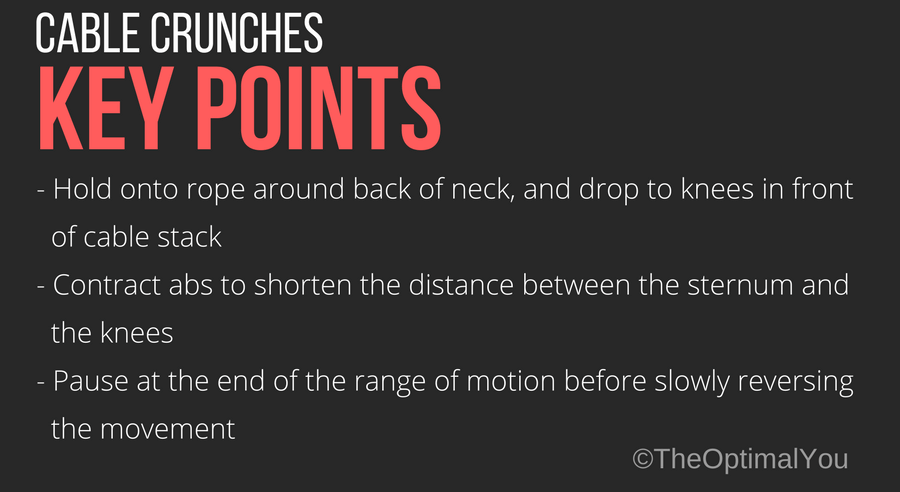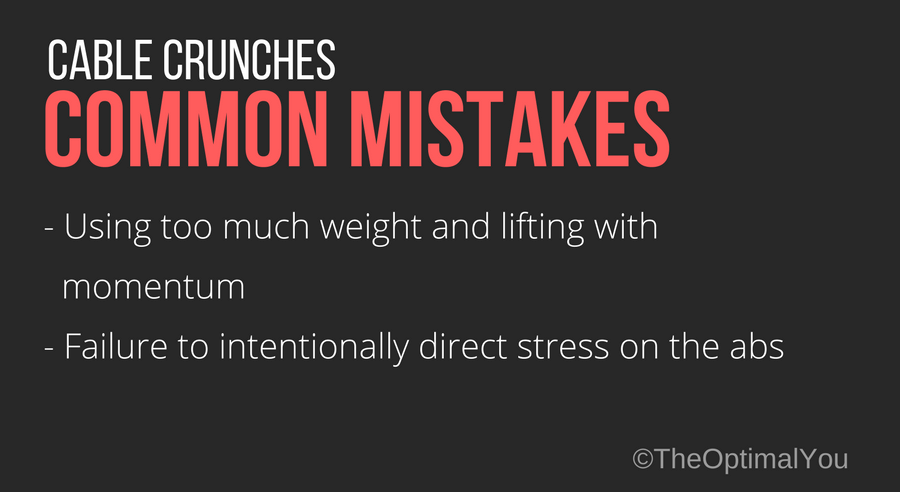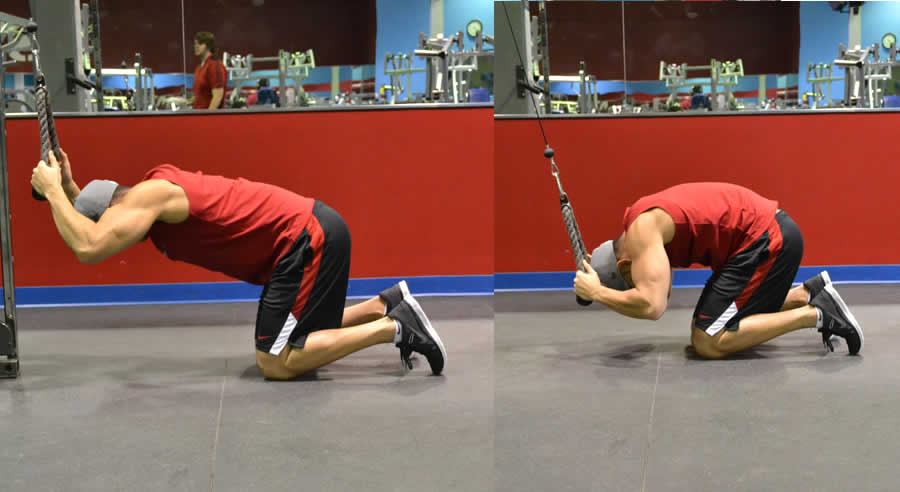Purpose Of Cable Crunches
The cable crunch is an exercise specifically designed to target the abs most, of all the primary midsection muscles.
Equipment Needed To Perform Cable Crunches
As you would imagine, the equipment required to perform cable crunches would be a (high) cable pulley, as well as a rope attachment.
Difficulty Of Cable Crunches
On a scale of 1 to 5, cable crunches would rank between 1-2. On one hand it’s a fairly simple exercise, but on the other you must really concentrate on directing the stress onto the abs, or it can be very easy to lose the connection with the muscles you are trying to stimulate most from doing this exercise in the first place.
How To Do Cable Crunches
As stated above, cable crunches are relatively easy to perform, the challenge comes from the concentration required to actually direct the stress onto the desired musculature – which in this case is the abs.
Begin by holding a rope attachment attached to a high cable pulley, and dropping down to your knees a foot or so away from the cable stack. The rope should wrap around the back of your head, as if you were trying to tightly hold onto a scarf around the back of your neck.
Anchored on your knees, you begin the movement by focusing on contracting your abs – what you can think about is shortening the distance between your sternum and your knees (as if you were trying to round your back as much as possible to facilitate this shortening between those two points).
Crunch down towards your knees under control, aiming to bring your elbows into contact with your knees (although they do not need to touch, that’s just the intention of your movement). Hold the contraction at the end of the range for 1-2 seconds before slowly reversing the movement.
Come up only as far as the tension is kept on the muscles – you are not aiming to come all the way up for the sake of bringing the rope attachment to where the weight stack can rest.
Key Points When Performing Cable Crunches

- Hold onto rope around back of neck, and drop to knees in front of cable stack.
- Contract abs to shorten the distance between the sternum and the knees.
- Pause at the end of the range of motion before slowly reversing the movement.
How Many Reps When Performing Cable Crunches
The abs in general are not a muscle you want to train “heavy,” as the risk of injury far outweighs any potential reward that would accompany doing so. Therefore, the ideal amount of reps would be anywhere between 12-20.
The abs, probably more so than any of the more popular muscles people wish to train when they go to the gym, require a great deal of concentration to promote the desired effect, so the weight must be light enough to facilitate that, but still heavy enough to require a strong contraction to take place to actually move the weight in the first place.
Common Mistakes When Performing Cable Crunches

Some of the more common mistakes when performing cable crunches are:
1. Using too much weight – what happens when there is too much weight is people will generally use their bodyweight to help assist with the movement (which entirely defeats the purpose of choosing this exercise in the first place). To facilitate the movement they will also contract other, non-desired muscle groups like the lats, which thus reduces the demand on the areas you wanted to work in the first place.
2. Failure to intentionally direct stress onto the abs – often times people just go through the motions when training abs, and aren’t actually focusing on the muscles they are trying to develop. It can become very easy to just go through the motions when training the abs because the truth of the matter is that training them correctly can be extremely uncomfortable, so instead of intentionally making things more uncomfortable for oneself, the easier route is to just go back and forth and hope for the same outcome – sadly it does not work this way.
Modifications To Cable Crunches
There aren’t really any worthwhile modifications to cable crunches that can be made, and them still be referred to as cable crunches. While you can choose to rotate towards one side to increase the demand on the obliques, doing so would then be an oblique cable crunch, not a cable crunch.
When To Do Cable Crunches
Cable crunches can be used at any point during an abdominal training session. They are just as good at the beginning, as they are at the end, although if you are too fatigued it can be very difficult to deliberately keep the tension on the abs.
Alternatives To Cable Crunches
The primary alternative to the cable crunch would be a standard crunch, which can be performed pretty much anywhere, as all you need is a floor.
Cable Crunches vs. Crunches
The benefit to cable crunches over regular crunches is that you can vary the resistance, as well as the fact that the cable will allow you to keep the muscles under constant tension throughout the movement.
The benefit to regular crunches over cable crunches is that they can be done anywhere, since no cable apparatus is required to perform them – thus making them a lot more practical in most cases.

